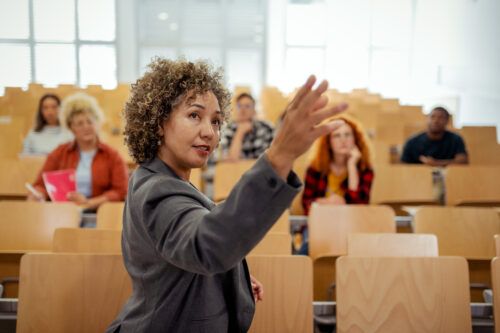Learning styles of various kinds have been prevalent in education for more than twenty years. The most widely used is VAKT (Visual; Auditory; Kinaesthetic; Tactile). One of the main attractions of learning styles is that they offer a ‘magic key’ to unlock the mysteries of each individual’s learning, thus allowing teachers to use the matching teaching technique so that everybody in the class can learn.
Many theories are now largely discredited, mainly because of the lack of any empirical evidence to support them but also because of the dangers of labelling students as specific ‘types’ of learners.
A comprehensive review of learning styles identified 71 different models and evaluated their effectiveness. It concluded that in nearly all cases learning style methodologies had limited or no effect and, further, there was very little evidence to support their effectiveness. VAKT has attracted the most criticism because there is no theory or scientific justification which provides evidence of the existence of these ‘styles’ of learning or any implications for planning teaching and learning.
As well as the lack of evidence to support learning styles theories there is also the danger of labelling students as having a personal, predominant learning style which teachers must cater for. It now seems clear that identifying students as having a preferred learning style is likely to limit rather than enhance their learning.
Learning styles were originally seen as part of the ‘brain-based’ learning movement along with other activities such as ‘brain gyms’. The claims for the success of these methods were frequently based on evidence from neuroscience. The rapid growth and development of neuroscience shows that we should now regard learning styles as a ‘neuromyth’. Other neuromyths include the beliefs that we only use twenty percent of our brains, or that people have a left-brain or right-brain dominance.
Evidence from neuroscience challenges the learning styles theorists’ claims that we receive information through a particular ‘sensory modality’ and is then stored in the same way. So, for example, the belief that things learned kinaesthetically are stored in a ‘kinaesthetic’ part of the brain and that things learned visually are stored ‘visually’.
The balance of evidence suggests that we should abandon them. The most valuable message from the learning styles debate is that people learn in many different ways. Teachers should have a wide, and continually developing, range of techniques to draw on for long and short-term planning.
Teachers are busy enough without having to administer and analyse learning styles questionnaires. It is more appropriate to rely on the professional expertise of teachers to understand their learners and discover the best ways to help them learn rather than use ‘solutions’ which have the appearance of scientific rigour but are of dubious value.





Leave a Reply